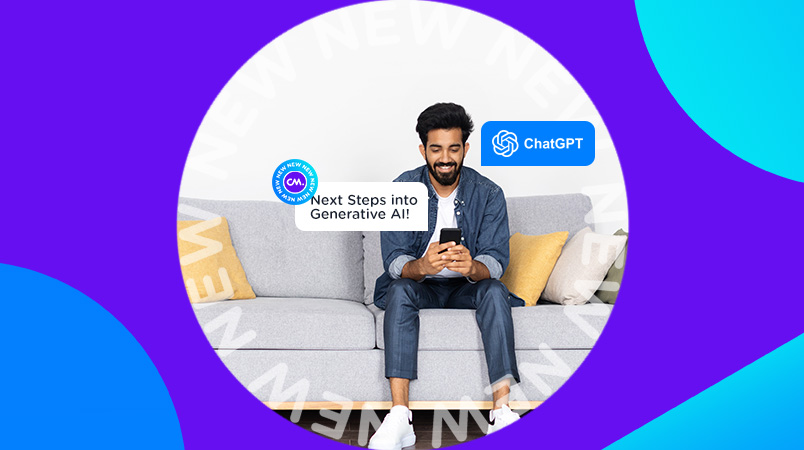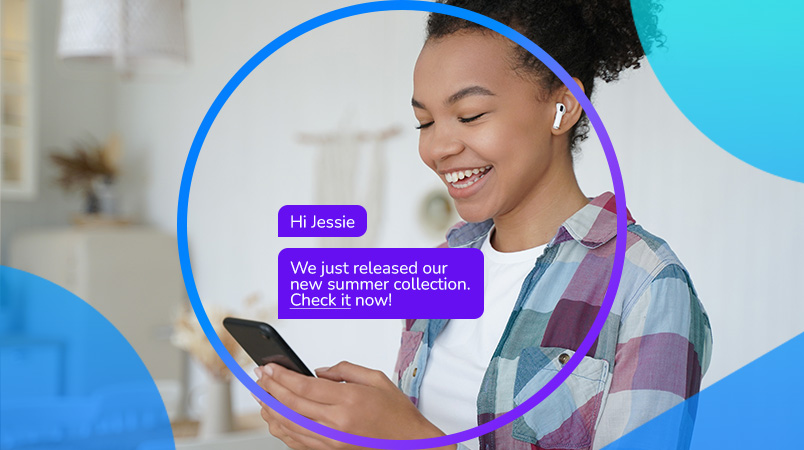Does your business thrive on positive customer interactions? Today we’ll look at the essential customer service KPIs you should be tracking, why and how they’re measured, and how AI technology can make reaching out to your customers effortless.
I. Why Should You Measure Customer Service KPIs?
Measuring key performance indicators (KPIs) is one of the most effective ways to track your customer service program’s progress. When you can “boil down” a customer service metric to a numeric value, it’s a quick and easy way to determine whether your efforts are delivering the results you want.
Knowing what’s working and what isn’t helps you retool your efforts in boosting customer happiness, increasing engagement, retention, and customer loyalty.
IV. 12 Customer Service KPIs You Should Be Tracking
Average Abandonment Rate
Net Promoter Score (NPS)
Average Handle Time (AHT)
Average Resolution Time (ART)
Channel Performance Analysis
Cost Per Conversation
Customer Effort Score (CES)
Customer Retention Rate (CRR)
Customer Satisfaction Score (CSAT)
First Contact Resolution (FCR)
First Response Time (FRT) or Average Wait Time (AWT)
Total Tickets/Tickets Per Customer
1. Average Abandonment Rate
Long customer wait times frequently end in an abandoned conversation due to the frustration of long hold and/or idle wait times. As customers look for immediate attention and have a pressing question when they fail to receive their response when a representative is unavailable, the call or message "abandonment rate" increases and so does customer satisfaction. When customers have to wait too long for help, they often will consider taking their business elsewhere. Lower abandonment rates indicate higher customer satisfaction.
Pro tip: Use this metric to identify why agents are taking too long to help your customers. Are agents answering too many routine calls? Using an AI chatbot may ease the burden on staff and allow them to prioritize more complex support issues.
2. Net Promoter Score (NPS)
Your Net Promoter Score is an average measured as a percentage, that indicates the likelihood that your customers would recommend your business and/or services to a friend – a metric that shows just how well your customer service efforts are contributing to your brand and customer advocacy. Net Promoter Score is calculated based on responses to a single question: How likely is it that you would recommend our company/product/service to a friend or colleague? The scoring for this answer is most often based on a 0 to 10 scale.
How to calculate NPS Score?:
% of Customers that are Detractors - % of Customers that are Promoters = NPS Score
What do the score mean?
Customers that respond with a score between 9 to 10 are called "Promoters," and are considered likely to exhibit value-creating behaviors, such as return buyers or continued users, meaning they remain customers longer and are more likely to influence positive referrals to other potential customers.
However, those who respond with a score of 0 to 6 are labeled "Detractors." Detractors indicate customers that are likely to exhibit value-creating behaviors such as promoting your services, repeat purchases, cross-sells, and overall loyalty and retention.
Lastly, those who score 7 and 8 are labeled "Passives," where their score is seen as neural in that their behavior falls between Promoters and Detractors – an opportunity to win the loyalty back if nurtured properly.
Pro tip: Use post conversation SMS or automated messaging outreach that asks customers to submit their score. Using automation and custom triggers and automated if/then logic, you can choose how to handle each type of respondent, giving customers that score high an incentive to continue their loyalty and respondents with a low score, the opportunity to submit feedback with the potential to speak with a live representative that can rebuild the trust and credibility within the relationship.
3. Average Handle Time (AHT)
Microsoft reports that 58% of American consumers will switch companies because of poor customer service. Wow.
How long does it take your customer support staff to resolve an issue from start to finish? This includes all aspects of the support process, including the initial contact, hold time, conversation, resolution, and post-call surveys, if any.
The lower your Average Handle Time, the better. Using AI chatbot technology enables your company to handle hundreds or even thousands of calls at once, shortening AHT significantly.
4. Average Resolution Time (ART)
Unlike Average Handle Time, Average Resolution Time measures the amount of time taken to resolve a problem specifically. It does not include the initial contact or post-resolution follow-up. Like AHT, the lower the ART time, the better.
Like Average Handle Time, chatbots also come in handy in reducing Average Resolution Time. They answer routine requests and common questions and gather customer data to hand off to customer service representatives.
Chatbots resolve low-level requests in minutes and ensure only the more complex, time-consuming issues get sent to real employees to resolve.
How to calculate ART:
Sum of all resolution times/Total # of resolutions = Average Resolution Time
5. Channel Performance Analysis
What are your most — and least — commonly used communication channels? Do you get more customer support requests through email and phone calls, or through mobile messaging channels like Facebook Messenger and WhatsApp?
Understanding how most customers prefer to reach you helps determine where you should focus most of your customer support efforts. Dedicate more customer support resources to the channels your audience is spending more time on.
6. Cost Per Conversation
How much you spend per customer service conversation is a critical KPI metric. Tracking this metric over time will help you understand seasonality or product issues that you should know to help level out unexpected expenses.
How to calculate Cost Per Conversation:
Conversion rate = (Total Support Costs / Total Issues)
Example: Total Support Costs = $10,000 / Total Issues = 25
Cost Per Conversation = $400
7. Customer Effort Score (CES)
Customer Effort Scores are a post-transaction measurement taken via customer survey or follow-up. It measures how customers feel about the ease (or difficulty) of doing business with your company.
Getting customer feedback regarding their experience with your products or services is a valuable tool in providing ever-increasing customer satisfaction levels.
There are several ways to set up CES surveys. Using scales of 1-5 or words like “Very Easy,” “Easy,” “Average,” or “Hard” or “Very Hard” are easy ways to enable customers to give you their honest feedback.
Pro tip: To get more responses, send out CES surveys via SMS, Facebook Messenger, or WhatsApp. On average, 31% of recipients will respond to an SMS survey within five minutes — a much higher response rate than you’ll get via email or phone.
8. Customer Retention Rate (CRR)
It’s much easier to keep an old customer than to find a new one. But did you know that increasing customer retention rates by just 5% can increase profits between 25% and 95%? Many factors increase customer retention numbers, but high satisfaction scores, positive interactions, and a healthy brand image go a long way in cementing a strong CRR.
How to calculate Customer Retention Rate:
Customer Retention Rate = ((CE – CN) / CS)) x 100
CE = number of customers at the end of the process
CN = number of new customers acquired during the process
CS = number of customers at the beginning of the process
9. Customer Satisfaction Score (CSAT)
Determining your CSAT helps evaluate how satisfied your clients are with your products, services, or business. You can ask customers directly after a support call or send them a survey asking them to rate their experience. The higher your CSAT number is, the better.
How to calculate Customer Satisfaction Score:
# of customers who responded as “satisfied”/# of total customers surveyed x 100% = % of satisfied customers
Example: “Satisfied” customers 1,000 / Total customers surveyed 1,500 = 66% CSAT
10. First Contact Resolution (FCR)
First contact resolution means resolving a customer issue in one interaction. Resolving issues from the first point to contact is a good indicator of how well you’ve trained your employees in identifying problems and solutions without involvement with other staff or management. The higher your FCR rate, the more satisfied your customers tend to be.
Examples of FCR include resolving a customer’s issue:
In one live chat session
In one phone call
In one email
In one mobile messaging channel session (Messenger, WhatsApp, Apple Messages for Business, etc.)
Filtering support issues using AI chatbots and scripts can further speed resolution by narrowing down the exact problem before the call reaches a live support agent. Not only does this save on staffing costs, but it also provides a smooth, professional customer experience that often resolves routine support issues without any human interaction.
11. First Response Time (FRT) OR Average Wait Time (AWT)
How long do your customers wait before you respond to their requests for assistance? According to Hubspot research, 33% of customers are most frustrated by having to wait on hold and then by having to repeat themselves to multiple support reps.
If you have a chat feature enabled on your website but live operators are busy, do you use a chatbot to gather initial information, making the customer feel that their request is important and taken seriously? Even if a live agent is necessary to solve a customer’s problem, quick acknowledgment and respect for the customers’ time are appreciated.
12. Total Tickets/Tickets Per Customer
Are you paying attention to how many support tickets you’re generating within a specific timeframe? If so, is there a pattern to the questions people are asking?
Outside of time, day, or seasonality changes, an unusual uptick in total tickets or tickets per customer can reveal problems with a particular product or service. Or it could mean that you’ve had a surge of new customers. Noting these distinctions is another reason tracking KPIs is so valuable to your business.
III. How Can You Improve Your Customer Service KPI Metrics?
Once you’ve tracked your relevant KPIs, then what? There are three ways most businesses improve their customer service efforts to improve their KPI metrics: Hire more customer service staff, outsource customer service staff, and use AI chatbots.
Tip 1: Hire More Customer Service Staff
Need more service, hire more people, right? Hiring full-time staff is a time-worn strategy that does work — but at a cost. The median salary for full-time customer service agents is currently $36,598 in the U.S.
With more businesses shifting their businesses online and marketing internationally, the need for around-the-clock staff has also increased to keep up with demand. Hiring additional staff to work 24/7/365 is prohibitively expensive for most SMBs, not to mention the addition of benefits, PTO, and additional equipment.
Tip 2: Outsource Customer Service Staff
Outsourcing a customer support team is the next logical step. While less expensive than hiring an in-house team, this option can also be too costly for most small businesses to afford.
Additionally, outsourced staff must be carefully trained and monitored to provide the seamless customer experience you want representing your business and your brand.
Tip 3: Use AI Chatbots
If the thought of “Artificial Intelligence” conjures up terrifying images in a certain Will Smith movie, think again. AI chatbot technology helps customer service agents work faster and more efficiently by handling scores of routine tasks, freeing live agents for more complex interactions.
Chatbots gather customer data and make it available to a live agent before hand-off, providing the agent with valuable information that speeds decisions and customer communications.
Chatbots may not fully replace human agents — at least not yet! But their ability to augment customer service efforts and provide low-cost virtual assistance makes them an attractive option to improve KPIs, customer engagement, and brand loyalty.
IV. Outperform Customer Expectations with CM.com’s Mobile Service Cloud
Are you looking for a way to meet or exceed your customer service KPIs? Of course, you are. CM.com’s Mobile Service Cloud delivers superior experiences, engages customers, and increases customer happiness -- all in one platform.
CM.com increases customer satisfaction by letting your customers communicate with you via preferred channels like Facebook Messenger, Whatsapp, and Apple Messages for Business.
CM.com boosts productivity and efficiency by using chatbots to automate conversations within our Omnichannel Inbox.
CM.com maximizes ROI & conversions with 360-degree Customer Profiles that personalize the entire customer journey and outperform expectations.
Remember, happy customers, convert more. Ask for a demo of the Mobile Service Cloud today!








